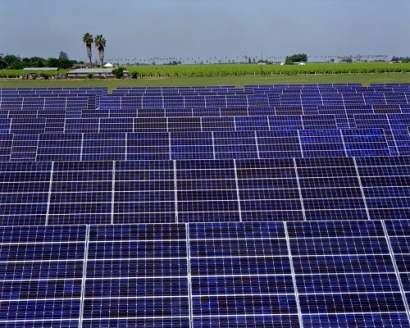
Much has been written about PPAs in recent months, whereas, a couple of years ago almost no one in Europe had heard of them. Although PPAs have been around for years, since they are just bilateral contracts for energy purchaseused to reduce future risk of fluctuations of the volatile market price, their use as a tool, to make possible the bank financing of a new renewable energy project on the one hand and for a buyer to obtain a green certification of their electricity supply on the other, is very recent.
Proof of this growing interest in PPAs is the long-term price forecasts made by AleaSoft. In recent times the company has experienced a clear increase in the number of requests for these forecasts. Before 2018, those interested in this type of forecast were large consumers who wanted to carry out strategic planning of their long-term electricity consumption. As of 2018, the demand for these forecasts increased for all European markets, and new agents appeared. Currently among the requestors of long-term price forecasts are developers of wind and PV farms, and, banks and investment funds needing the forecasts for a reference price allowing them to determine the feasibility of financing new renewable projects. Also, small consumers looking for an attractive and stable price for their energy costs and green certification of their production.
The increase in PPA contracts with renewable energy parks is directly related to the decrease in the production cost of PV technology. It is already profitable to operate a PV plant going directly to the market without incentives or aids. But, to build a park, an initial investment is necessary, and this requires funding. To obtain financing, it is critical to ensure a medium and long-term income rate until the installation can be amortized. The price volatility in the electricity markets means that income forecasting for a PV installation entails a high risk that banks and investment funds need to cover, and a PPA is an option to minimize the risk.
Renewable power auctions only guarantee a floor in the remuneration price of the parks, but do not guarantee a fixed income. So a PPA is a complementary solution for developers of renewable parks, since it guarantees the sale of part or all of its production at a pre-established price for the next ten or twenty years, and therefore, an insured, predictable income and with a much lower risk than direct market retribution.
And what does the energy buyer earn with such a long-term contract? The energy buyer, known as the offtaker, gets a part of their energy costs pre-established and insured for the duration of the contract. This allows for more efficient long-term cost planning. The other interesting benefit, if the PPA is physical or includes certificates of guarantee of origin, is the certification of green, clean and renewable energy that the energy supply of the offtaker receives, which allows it to meet corporate social responsibilityobjectives, and label and advertise their products as "green". An example of the advantages of PPAs for the buyers is the clear commitment made by large corporations such as Google, Apple, Facebook and Amazon, the well-known GAFA, to sign PPAs with large wind and photovoltaic parks. Increasingly, end consumers demand the "clean" origin of products they consume, and there will come a time when this labeling will be essential to be able to offer a competitive product.
In an electricity market such as the Iberian market MIBEL, which has an extensive, mature and robust electrical system, an interesting form of PPA is a financial PPA. This is a contract in which the method of energy delivery is not established, only the economic compensation of a contract for the difference between the wholesale price of the pool and the agreed purchase price. With this type of contract, both buyer and seller must procure the sale and purchase of energy in the spot market, either directly, through a representative or through a retailer, and then the economic compensation between the parties is made. If the market price exceeds the contractually agreed price, the generator compensates the consumer with the difference. On the other hand, if the price of electricity falls below the contractual limit, the consumer is responsible for compensating the balance.
The price in a PPA does not have to be a fixed price either. The price of the contract can be indexed to the pool price with an offset, a cap and/or a floor. In this way, the price of the sale can fluctuate with a maximum and/or minimum. Currently, the prices that are being signed in the PPAs, that have been known, are clearly below the prices of the futures markets and the forecasts of the pool price for the coming years. And this is another clear incentive for large energy consumers to sign a PPA: get advantageous prices against the forecasts of electricity prices. This gives them a competitive advantage over direct market consumers.

